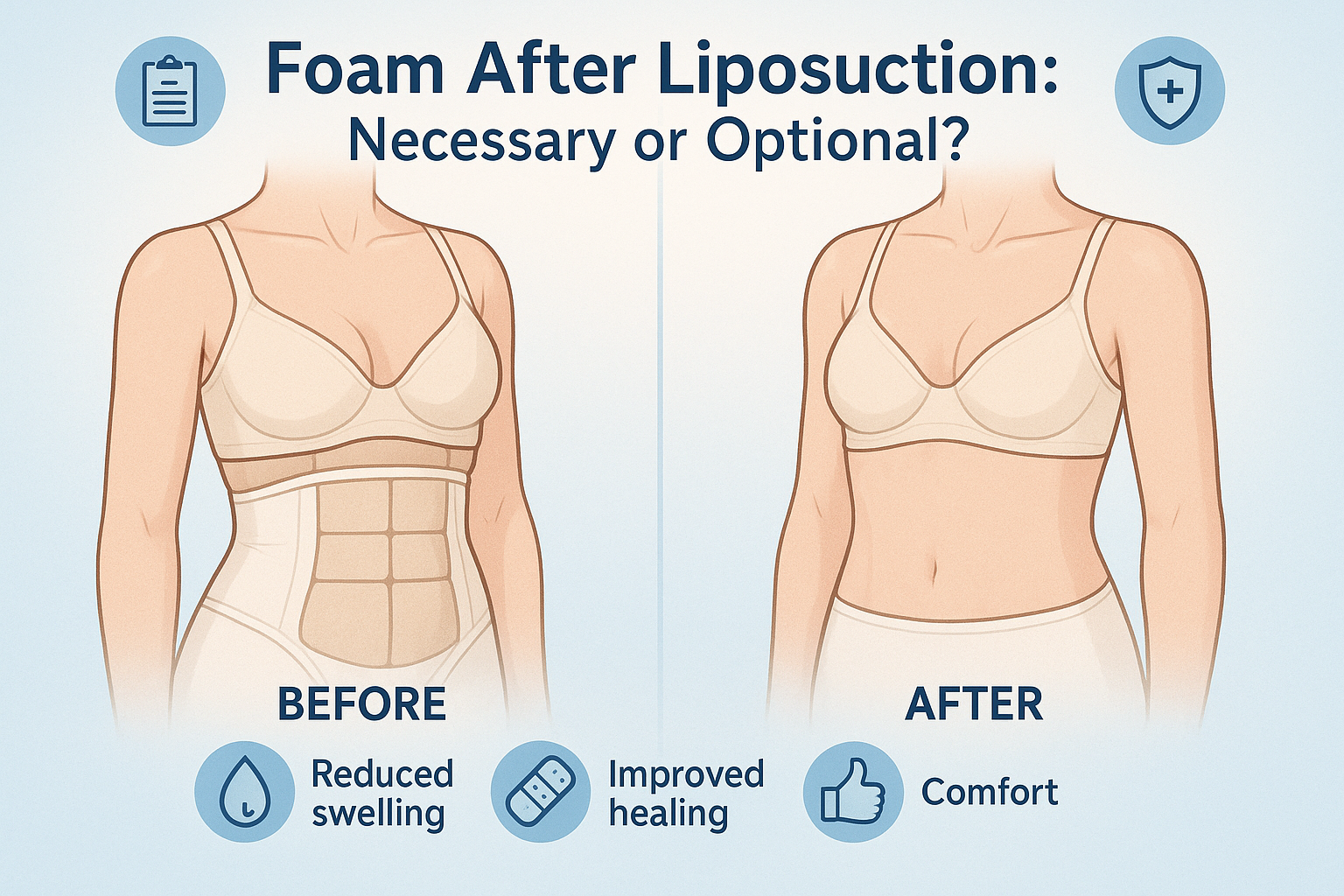Foam After Liposuction: Necessary or Optional?
Are you considering liposuction or recovering from one? In either case, you're likely wondering about the recovery process, especially how long it takes and what tools can support healing. One common question that often arises is: Is lipo foam necessary after surgery, or is it optional?
The short answer is yes—lipo foam is generally recommended after procedures like liposuction or a BBL (Brazilian Butt Lift). It helps reduce swelling and bruising while providing gentle compression to support overall healing. Every patient's recovery journey is unique; therefore, it is essential to consult with your surgeon for personalized advice.
In this article, we’ll explain what lipo foam is, how to use it, its key benefits, and address the most frequently asked questions. Let’s dive in.
What is Lipofoam and How Does it Work?
Definition: Lipofoam is a thin, soft, and flexible, medical-grade polyurethane foam sheet or pad placed between skin and compression garments after liposuction to provide necessary compression to the pressure points.
How It Works: After surgery, one of the difficult and uncomfortable tasks is to manage swelling and bruising at the surgical sites. To manage all this, there is a need for continued support to prevent fluid retention and complications. This is where a lipo foam pad becomes essential. Its soft, flexible nature allows it to conform smoothly to the body's contours without creasing or rolling. By distributing consistent, uniform compression, foam significantly reduces swelling and bruising, minimizes the risk of fluid retention, enhances lymphatic drainage, accelerates the recovery process, and promotes optimal skin retraction for smoother wrinkles or scarring-free results.
What are the Benefits of Using Lipofoam?
Lipofoam serves many benefits to boost overall recovery and results.
- Reduce Swelling and Bruising: Consistent pressure prevents fluid accumulation and blood clotting.
-
Prevent Irregularities: Uniform compression distributes the remaining fat cells evenly, reducing the risk of the formation of lumps and bumps inside the skin.
-
Improve skin adherence: Encourage skin to re-attach with underlying tissues smoothly.
-
Enhance Comfort: Soft, flexible, pliable pad adjusts to the body's shape, acts as a barrier between skin and compressor garments to minimize friction and prevent irritation.
-
Speed-up Recovery: Breathable designs of lipo foam ensure proper flow of oxygen, prevent moisture accumulation, and improve blood circulation.
-
Low risk of Revision: Reduce the risk of seroma. Infection, uneven fat distribution, thus lowering the risk of revision.
How Long Do You Wear Lipo Foam?
Lipo foam should be worn 24/7 underneath your compression garments during the initial stages of recovery.
Most surgeons recommend wearing it consistently for at least four weeks after your procedure. However, the exact duration can vary from person to person, depending on factors like the extent of the surgery, your skin’s elasticity, overall health, and age. Some patients may need to wear Lipo foam for up to 2–3 months to ensure optimal healing and to achieve the best contouring results.
Important Tip: Always remove your foam pads and compression garments before showering, and make sure to reapply them immediately afterward to maintain consistent compression.
How to Use Lipo Foam Correctly after Liposuction?
Proper application of lipofoam is essential for its effectiveness in promoting optimal healing.
-
Make sure your skin is clean and completely dry before applying it.
-
Place the lipo foam directly on the treated areas.
-
Ensure the foam lies flat against your skin without any creases or folds.
-
Put your compression garment over the foam to hold it securely in place.
-
Lipo foam usually comes in sheets—you can cut it to fit your body comfortably.
Also Read: How to Choose the Best Lipo Foam for Your Post-Surgery Needs
Is Lipo Foam Really Necessary After Surgery?
Yes, lipo foam is generally considered an important part of the recovery process after liposuction. It helps reduce swelling, supports even healing, and can improve overall comfort during those first few weeks. Skipping it may increase the risk of complications like uneven results, fluid buildup (seromas), or longer-lasting swelling, which could affect your final outcome.
That said, whether lipo foam is necessary can vary from person to person. It depends on things like your surgeon’s specific approach, how much liposuction you had, and how your body heals. Some people may need it, while others may not. That’s why it’s important to follow your surgeon’s advice—they’ll know what’s best for your recovery and results.
Also Read: Lipo Board vs. Lipo Foam: A Comparative Guide
FAQs
1. Can I sleep without Lipo foam?
It is generally advised to sleep with a lipofoam, especially during the initial recovery period. If you find it uncomfortable at night, you may remove it if your surgeon approves.
2. Where do you put liposuction foams?
You can use liposuction anywhere where liposuction has been performed, like the abdomen, flanks, thighs, and buttocks. It comes in different sizes and can be cut to fit any area of the body.
3. Can I reuse my liposuction foam?
Lipo foam is primarily intended for single use, but yes, you can reuse it as long as it’s still in good condition. If you notice any dirt, damage, or if the foam has lost its shape, it’s best not to use it again.




